Dairy is shaping up for success with a series of major strategic deals, buoyed by slowing inflation and stabilising costs
This time last year, the UK dairy sector was in turmoil. Tight supply and soaring production costs had pushed average farmgate milk prices to an all-time high in December 2022, leaving suppliers facing a slump in profitability.
A few months later, those milk prices plummeted, sending retail prices falling again. In the face of this instability, an ever-growing group of dairy farmers considered throwing in the towel.
How quickly times can change. Just 12 months on, a string of major strategic deals and investments suggests the outlook for the industry is far more buoyant.
In January, Müller UK & Ireland completed the sale of Milk & More to Freshways Group for an undisclosed sum, having overhauled the fortunes of the doorstep delivery service. Six months later, Müller confirmed its own acquisition of family-run Yew Tree Dairy.
Then in May, Arla Foods committed to a £300m investment across five of its UK sites to ensure its network remained at the “forefront of food production”. And in June, Cornish supplier Trewithen Dairy was acquired by German dairy processor Ehrmann.
So, do these deals signal a more confident sector emerging from years of turmoil? If so, what’s changed? And what challenges await on the horizon for this newly configured industry?
“We have world-leading levels of quality, sustainability and standards in the UK”
Rob Hutchison, CEO at Müller Milk & Ingredients
The statistics are undoubtedly encouraging. Six deals were announced in the first six months of 2024, compared with four in the whole of 2022, points out Rob Hutchison, CEO at Müller Milk & Ingredients.
Once its own acquisition of Yew Tree Dairy is complete, Müller will “significantly invest in the capacity and capabilities of the site in Skelmersdale and use its milk powder capabilities to grow our export business”, he says. “This acquisition will enable us to tap into this global dairy consumption growth, unlock additional export opportunities and continue to drive supply chain resilience.”
It reflects growing investment across the company. “Whether on logistics, dairies, innovation, people or packaging, Müller has invested significantly in MMI since it was formed in 2015,” Hutchison says. “We now have a competitive, balanced, progressive and resilient business.”
At Trewithen Dairy, its deal with Ehrmann will pave the way for a £20m injection into its dairy processing capacity and capabilities in Glynn Valley, says CEO Paul Berne. There’ll be a focus on scaling up production of desserts, particularly on-trend protein lines. “It’s new skills, new jobs and new equipment.”
Will new legislation really make milk purchase contracts ‘fairer and clearer’?
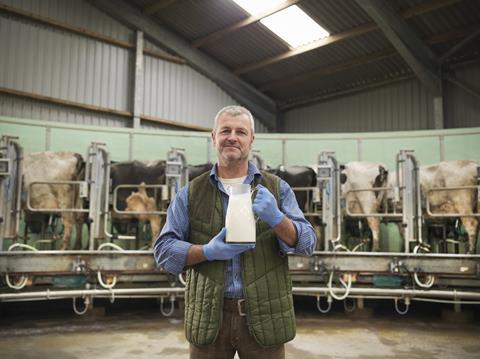
February was a milestone month for UK dairy farmers. After years of campaigning and countless pricing disputes, new legislation was finally laid before parliament that, it’s hoped, could pave the way for a radical overhaul in how they’re paid for their milk.
The rules set out in the Fair Dealing Obligations (Milk) Regulations 2024 have been designed to make milk purchase contracts ‘fairer and clearer’. They are the first use of new powers set out in the Agriculture Act 2020, which allows the creation of regulations that protect UK producers from unfair treatment within the supply chain.
Obligations include clear terms around pricing, the prohibition of unilateral changes to contracts and – crucially – a dispute resolution mechanism that helps purchasers and producers to settle disagreements.
At the helm of that dispute resolution mechanism will be a new statutory role: the Agricultural Supply Chain Adjudicator (ASCA).
The new rules came into effect on 9 July – and the role of adjudicator is held by Richard Thompson, formerly of Ofcom and the OFT.
Now, all new milk contracts need to be compliant, while older contracts have 12 months to meet new legislation requirements.
Any producer not satisfied this is the case can lodge a complaint with the ASCA, which has powers to impose a civil penalty, compensation or both.
The maximum amount of a civil penalty is 1% of the purchaser’s turnover – a not inconsiderable deterrent.
And for Arla, its £300m investment reflects greater confidence among its nearly 10,000 farmer members, points out MD Bas Padberg. “Our farmers are very positive about the future,” he says. “That is why [they’ve] decided to invest £300m in the coming years. It’s their money, it’s their investment.”
A number of factors have driven this upturn in confidence. For one, there’s a newfound sense of stability in the market. This year has been something of a “turning point”, believes Padberg, after a series of crises. “Covid was there, then we had the war in Ukraine, which led to high inflationary effects in terms of prices, and that put pressure on demand and the value chain.”
Now that pricing pressure is starting to ease. Food inflation fell to 1.5% in June [ONS]. That month, average milk prices were 37.86ppl, a 26.6% fall from their peak in December 2022, according to Defra.
“Dairy farming is not for the faint of heart and increasing regulations only make a challenging business more challenging”
Susie Stannard, lead analyst at AHDB
That reflects a stabilisation in input costs. Fertiliser costs have reduced by £200/t over the past 12 months; energy and fuel have fallen 14.6% year on year; and compound feed has risen just 0.5% compared with the end of 2023, says AHDB.
Overall, it’s a more stable picture. “Milk prices have settled around the 40 pence level and, though it might go up a little bit more, it’s moving in half or single pennies again, rather than three or four pence every month,” says Berne.
That’s given the industry breathing space to think ahead. “For farmers to get paid a fair price and for consumers to have a fair price at the shelf and for everybody in between to have a reasonably settled position, economically means people can plan,” says Berne. “For people to be willing to invest, that environment is helpful.”
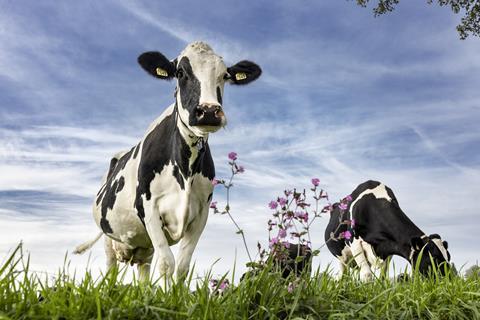
Consumer trends
The stable environment is also helping dairy giants respond to emerging trends in consumer behaviour. One encouraging trend is a move away from plant-based towards whole dairy lines.
“We’re seeing whole milk is increasingly becoming more popular,” reports Hutchison. “Whether that’s down to taste or concerns about processed alternatives, everyone will have a different reason, but we’re seeing a year-on-year increase in shoppers choosing whole milk – and that’s encouraging.”
There is also growing opportunity in value-added or premium products, which offer superior margins. That’s a key part of the strategy at specialist stilton maker Long Clawson, says MD Bill Mathieson.
“We’ve probably invested in our own dairy corporate about £45m over the last 10 years,” he says. “That investment is allowing us to get into different formats such as slicing, snacking, waxing of cheese, so that we can diversify. And we plan to put around another £50m of investment in over the next 10 years, too.”
More from The Dairymen 2024:
-
How can marge get back in fashion? Dairymen butter & spreads category report 2024
-
Creative challenge: next-gen packaging ideas to liven up dairy
-
How can plant-based grow again? Dairymen British cheese category report 2024
-
Why is Unilever selling its cream business?
That’s been matched by a “new energy” from retailers around speciality products, Mathieson adds. Having closed many of their deli counters during Covid, supermarkets are keen to tap this higher end of the market with more lines on shelves, he says.
Trewithen Dairy, too, has “started to get some traction nationally with our added value products – our clotted cream and our butter”, says Berne, in part fuelled by its strong focus on Cornish provenance.
Dairy innovation that responds to macro trends in protein, gut and personalised health is similarly gaining momentum. Since the start of the year alone, Graham’s The Family Dairy has launched its protein yoghurt drink, Shaken Udder has rolled out a range of protein milkshakes, and Biotiful Gut Health has debuted dessert-inspired kefir drinks.
“The continuing focus on gut health means cultured products are having a real moment,” says Hamish Renton, MD at HRA Global.
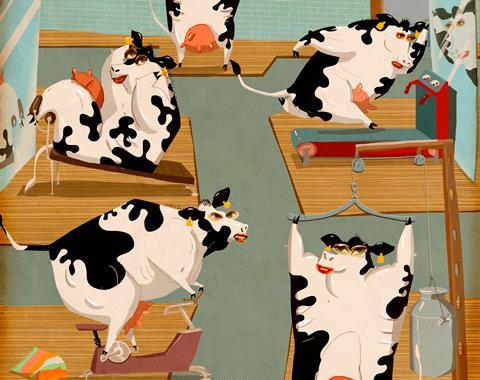
New usage occasions are also being tapped. Over the past year, for example, The Collective has rolled out a range of adult yoghurt pouches, following the success of Suckies for kids. “It is an exciting time in the dairy industry, where the trends are pointing towards dairy, and yoghurt, playing an even more important role in consumers repertoire,” says Collective CEO Sarah Smart. “High-quality yoghurt ticks so many boxes for consumers, and they are looking for inspiration and innovation to bring yoghurt into more of their eating occasions.”
Demand abroad is yet another positive for UK dairy. In 2022, the industry exported more than £2bn of goods to 135 countries, according to the Department for Business & Trade. There are now growing efforts to unlock this revenue stream further, with the creation of the industry-led Dairy Export Programme late last year. Its aim was to provide targeted support for dairy businesses, said then minister of exports Malcolm Offord, including an inward buyer trade mission.
Already, exports are behind some of the “positive shift in market dynamics”, says Rich Clothier, MD at Wyke Farms. There is “a global desire for products that meet demands for quality, provenance, and sustainable and ethical credentials,” he says.
“In the next decade, it’s projected 700 million people will join the global middle class, and this growth is expected to be driven primarily by developing regions, especially Asia”, he adds. “This growth in population will further drive demand for westernised dairy products.”
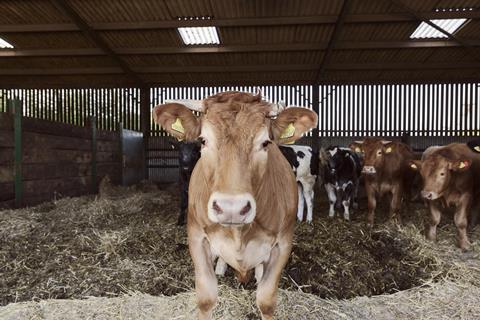
At dairy co-operative Dale Farm, the export opportunity is closer to home. “We see real growth opportunities across Europe through working with our retail partners with our range of high-quality cheddars”, says group chief executive Nick Whelan. “We also have been awarded a patent for our functional cheddars, which we sell into processed cheese customers in Europe, Africa, and the Middle East.”
Overall, “the trend towards scale and specialism will drive resilience – we are already seeing that at Dale Farm,” he adds. “Our recent investments will drive efficiencies, automation, digitisation, and innovation. All are essential for our sector to thrive.”
For all the positive signs in UK dairy, however, it would be remiss to sweep the challenges under the carpet. As Hutchison points out, “it would be incorrect to paint a picture of a golden period for UK dairy. Yes, we have world-leading levels of quality, sustainability and standards in the UK, but we can’t avoid the challenges that supplying farmers face on a daily basis.”
These include ongoing economic volatility, Brexit-related labour shortages and “the increasing cost of environmental compliance with nutrient management and emissions regulations throughout the dairy chain”, points out Renton.
Despite a slight easing of input costs, milk supplies also remain tight and producer margins squeezed. Against this backdrop, confidence across farmers remains poor.
And smaller businesses have struggled to compete. In June, Anglesey cheesemaker Mona Island Dairy entered administration – having only opened its £27m cheese plant last year.
“Costs of production are high and margins tight,” says Susie Stannard, lead analyst at AHDB. “Dairy farming is not for the faint of heart and increasing regulations only make a challenging business more challenging. There is a real need for industry to ensure that dairy farming provides a good enough standard of living to keep new entrants wanting to come in.”
Sustainability scrutiny
This need for a collective effort also applies to one of the most daunting challenges – and yet biggest opportunities – on the horizon for UK dairy: increasing scrutiny of sustainability in production.
“On sustainability, there’s a real opportunity for us,” says Mathieson. “We’ve got a dairy industry that is leading the world in terms of the low level of carbon footprint that we have by comparison to other markets.
“Our dairy footprint in the UK on average is 1.2 kilograms of carbon per kilogram of milk that we make. If you take the global average, it’s about 2.5.
“To put that in context, if there are 300 million cows globally, you could reduce that number… to about 150 million if the rest of the world got to the standard that UK dairy has.”
That’s backed up by Stannard, who points out “the UK, with its largely grass-based system, is very well placed to produce milk with a lower carbon footprint compared to the global average”. However, she acknowledges “environmental regulations have the potential to put downwards pressure on the sector”.
The key to unlocking this potential, rather than giving the sector another thing to worry about, will be a supportive rather than punitive approach to regulation, believes Arla’s Padberg.
“That’s an ask to government, to have stimulating measures for farmers that gives them a perspective to continue to invest in future.”
Why the SFI is ‘at the top of farmers’ worry lists’
Designed to support and reward sustainable food production, a newly expanded version of the Sustainable Farming Incentive (SFI) was made available to dairy farmers from July.
Having rolled out as a pilot scheme towards the end of 2021, followed by a wider rollout in 2022, the SFI pays farmers and land managers to take up or maintain sustainable farming and land management practices, by allowing them to sign up to specific actions.
The latest iteration has added a significant number of new actions that farmers can sign up to – from 23 in 2023, to 102. Farmers can commit to reduced durations for many of these actions, from five to three years. As of May, Defra said it had already received 23,000 applications for the funding.
So, is the additional support a welcome step?
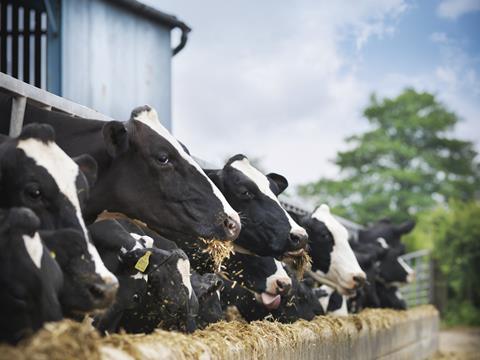
There are undoubtedly positives. “The recent enhancements are supporting farming of all kinds in the UK to be more sustainable and enhance biodiversity,” says Gary Lake, procurement & supply chain director at The Collective.
“The fact there are 102 different ways farmers can be paid for supporting the environment gives everyone in farming a chance of doing good, supported by the government,” he adds.
“Additionally, the fact that these incentives can be ‘stacked’, as one farmer we met via First Milk explained to us, means that there is a clear motivation to keep adding more biodiversity supporting measures to their farms.”
The expanded SFI offer is not enough to mitigate the loss of Direct Payments phased out post-Brexit, says AHDB.
But the changes to the scheme will help farmers make up a considerable amount of the shortfall, according to the body’s head of economics, Sarah Baker. “SFI is at the top of farmers’ worry lists at the moment, weighing up whether or not to participate in the scheme and to what extent,” she reports.
“The expanded SFI offer gives farmers much more flexibility in terms of choosing actions which suit their farms.
“It will contribute to net margin and mitigate loss of Direct Payments if used strategically and in line with business objectives, but careful consideration is needed to decide which plots of land to enter.”
What’s more, it isn’t yet clear where the improved SFI delivers a “level playing field” for all farmers, points out Bill Mathieson, MD at Long Clawson.
“We have to treat farmers equitably across all areas. If there are subsidies and opportunities for grants available, we should make that available right across the country.”








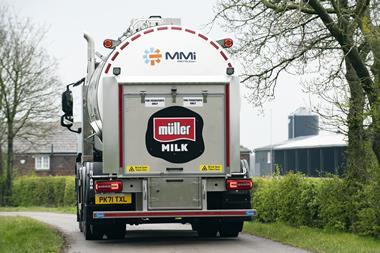

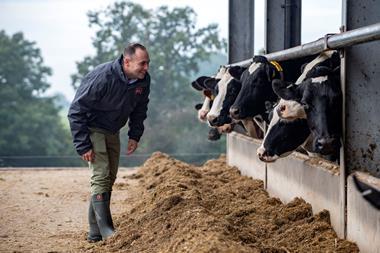
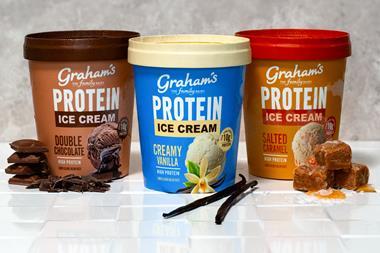
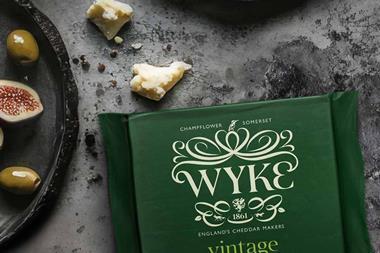
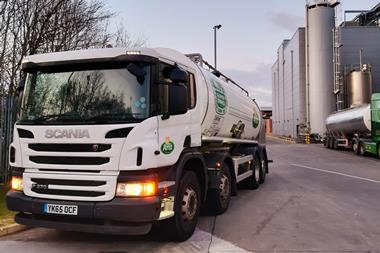
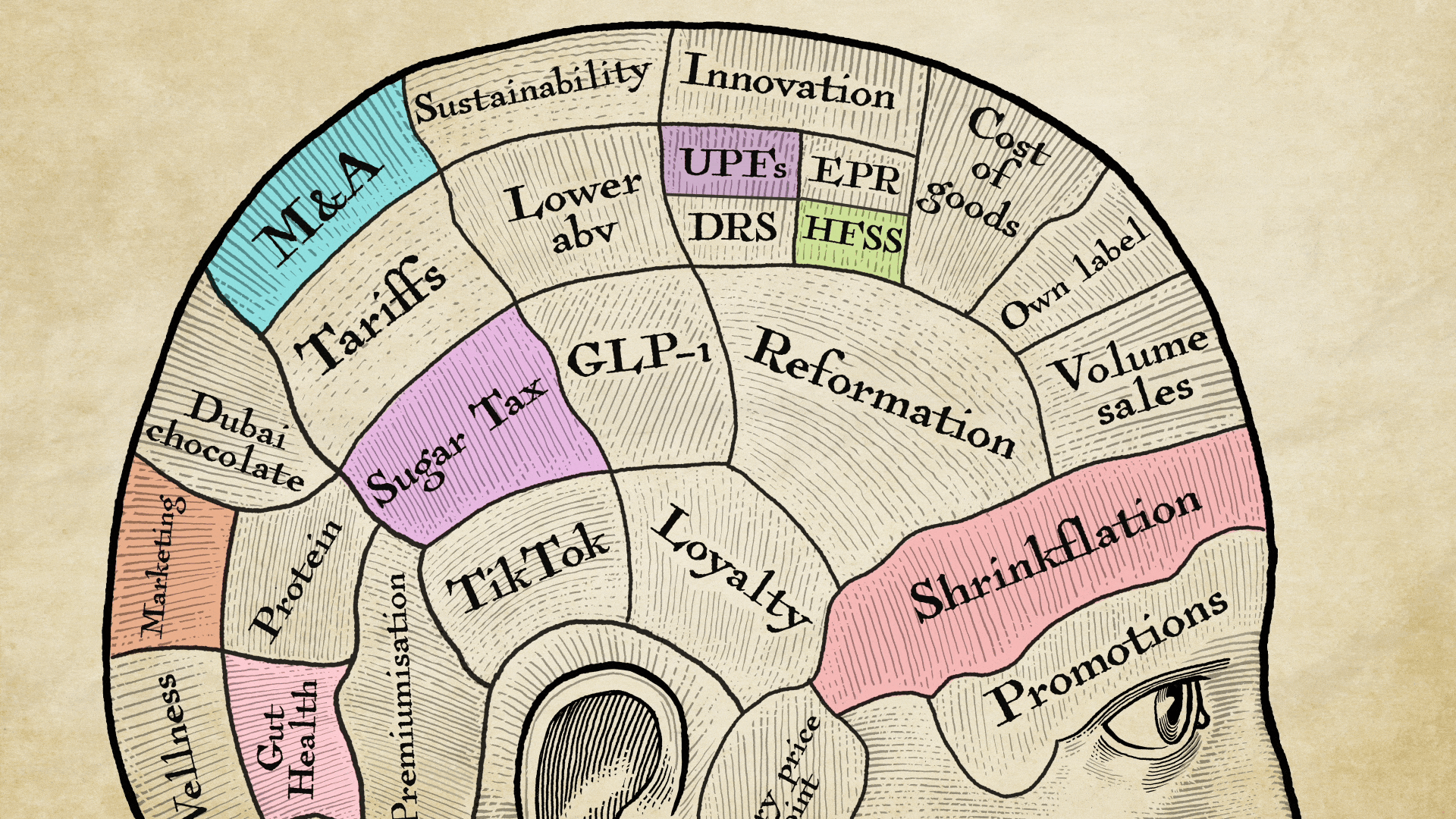
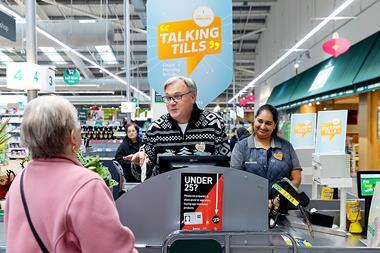




No comments yet